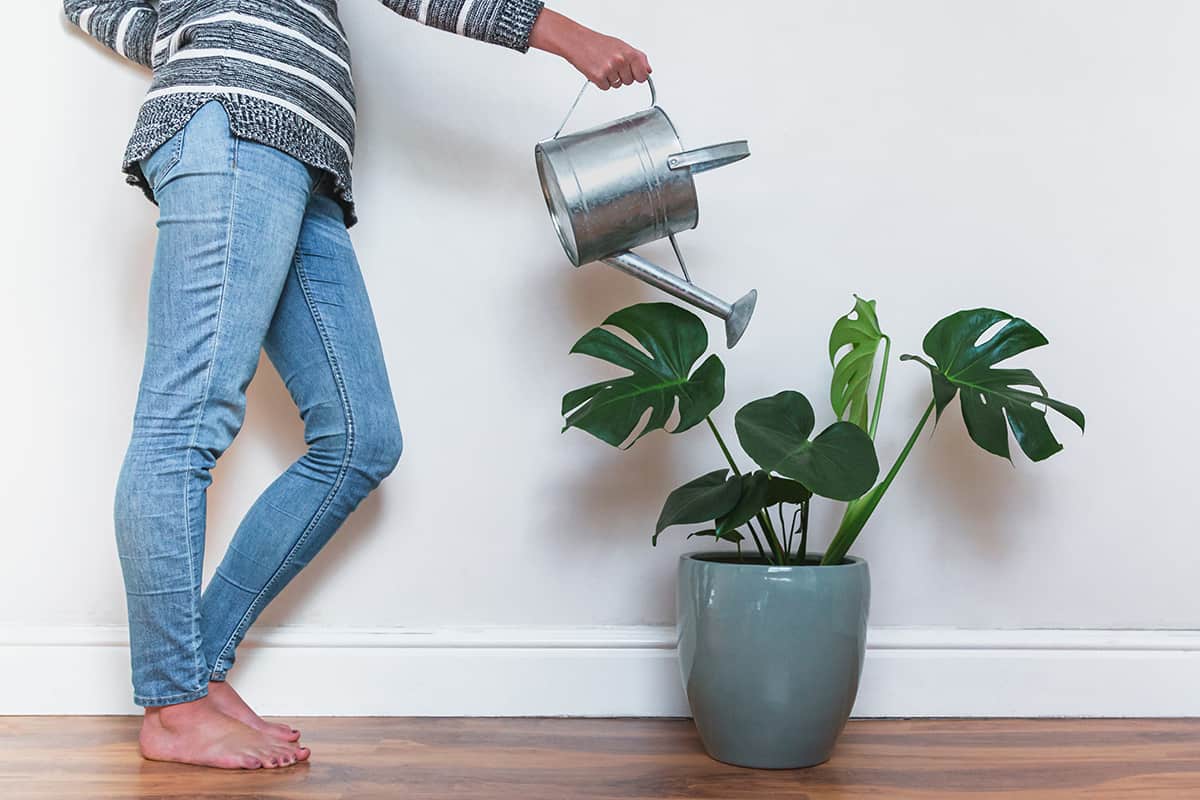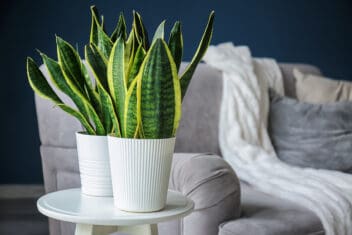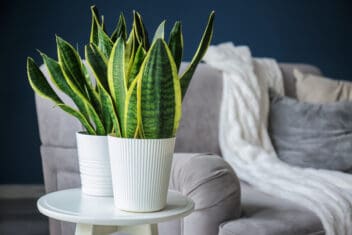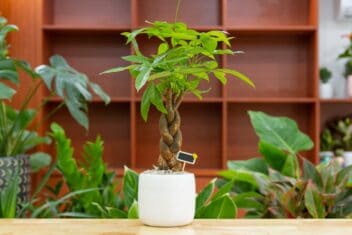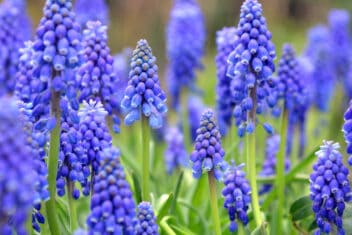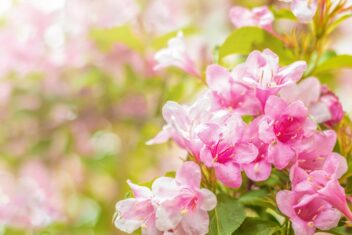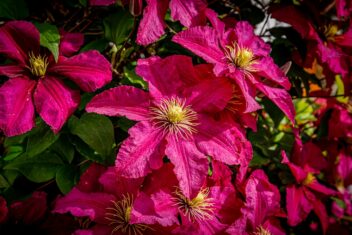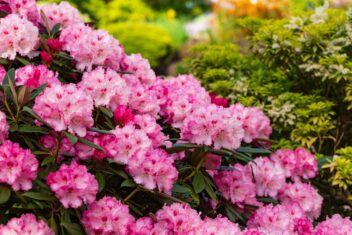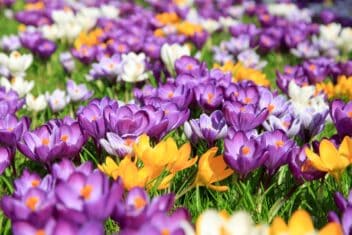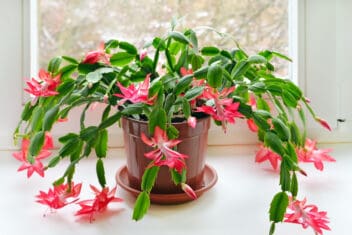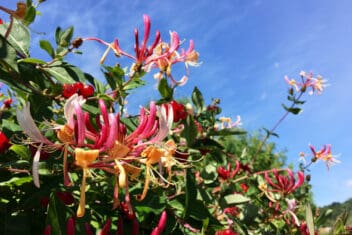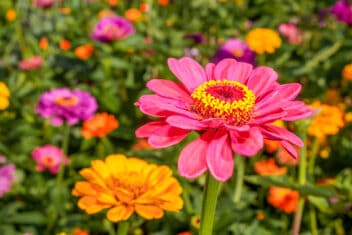The monstera plant is as impressive as it sounds. This big beauty is native to Central America and is often called the “Swiss cheese plant” due to the quirky holes in its foliage. Monstera is perfect for growing in the house as it’s easy to maintain and incredibly showy.
Like all plants, there are always some best practices to use, such as proper watering and feeding. If you’re new to houseplants, monstera is a great option, and we’ll help you make yours thrive.
Best Monstera Varieties
Before you can look after your plant, you have to pick which type of monstera species you would like to grow. The genus Monstera got its name from the large sizes that it can reach in its native habitat. Some grow up to 30 feet tall or more. But most stay much smaller in the home.
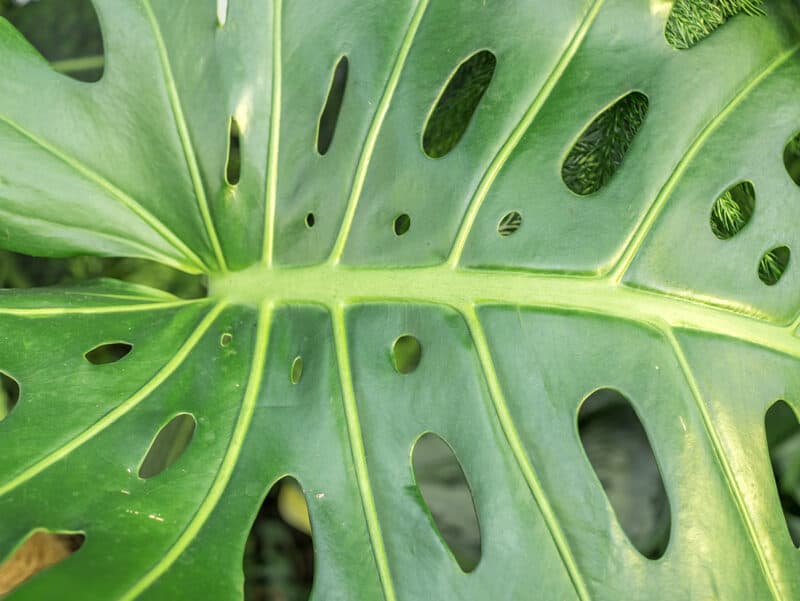
Here is a list of the popular species that you can find in nurseries:
Monstera deliciosa
This is the most common type of monstera plant. The name “deliciosa” comes from the sweet fruit it bears in its natural habitat (which humans can eat – but not pets). They like warm, humid climates with a moderate amount of water and sunlight.
Once planted, it’s important to rotate this plant to make sure that every leaf gets adequate sunlight and grows evenly. It’s also a good idea to re-pot these plants every 18-24 months.
Monstera borsigniana
Although it can be difficult to tell the difference between M. deliciosa and M. borsigniana, they differ in size and growth speed. M. borsigniana grows much faster than M. deliciosa. However, they can both be planted indoors and kept as a houseplant.
These tend to grow quite tall and might require a pole for support. M. borsigniana needs indirect sunlight and around 59 to 77°F for optimum growth.
Monstera variegata
Every variety of monstera plant has a distinct appearance because of its leaves, but M. variegata is quite special. From a distance, M. variegata can look like it has been painted white, making it can be an eye-catching addition to your home.
Unlike the other types of monstera, which are common, this is by far the hardest to come by, which means it’s more expensive. It likes warm, humid environments with gentle sunlight. It doesn’t like low light conditions.
Monstera adansonii
This form of monstera is the baby of the group. It is smaller than M. deliciosa, but the holes are extremely large. They can cover nearly half of the leaf structure! This little plant needs a moist climate, moderate light, and less water than some other species.
Monstera pinnatipartita
Unlike the distinct holes found in other monstera plants, Monstera pinnatipartita forms slits rather than holes. It needs lots of water, but less during winter. M. pinnatipartita also needs indirect sunlight and low humidity.
Monstera dubia
If you are looking for a sweet, delicate monstera to try growing, this one is guaranteed to bring some happiness into a home. The leaves of M. dubia have lovely heart shapes with a marble effect of white and dark green colors.
As with most monstera plants, you need to find a pot with drainage holes at the bottom and perhaps a pole to support the growth. Check regularly for dry soil at the top of the pot and add water when the top inch dries out. This is typically every 7-10 days depending on where you live.
Monstera siltepecana
Also known as silver monster, this variety goes through a wonderful transformation, similar to some other species. When it is young, the leaves are solid, but as they grow, they develop large fenestrations. Its leaves have a mesmerizing silver tint with dark green veins that look great in the home.
As monsteras are normally found growing up the trunks of trees, an M. siltepecana plant needs something to climb. It also requires regular moisture, indirect sunlight, and 55-99°F.
Monstera obliqua
As mentioned before, this precious monstera plant is rare and not commonly found in nurseries. However, if you do come across it, it can be a fantastic part of your plant family.
This variety has even more holes than M. adansonii; they cover up to 90% of the leaf! It’s a delicate plant that needs special care, which means around 70-85°F and 85% humidity or more.
This species is often mislabelled in shops. M. obliqua is rare, and most likely it’s actually an M. adansonii with the wrong name attached. Double-check to be sure.
Rhaphidophora tetrasperma
Not technically part of the Monstera genus, this plant is often referred to as “mini monstera.” It may be smaller than the rest, but it needs just as much care and attention. This tiny houseplant needs plenty of bright light, lots of moisture, and high humidity.
How to Plant Monstera
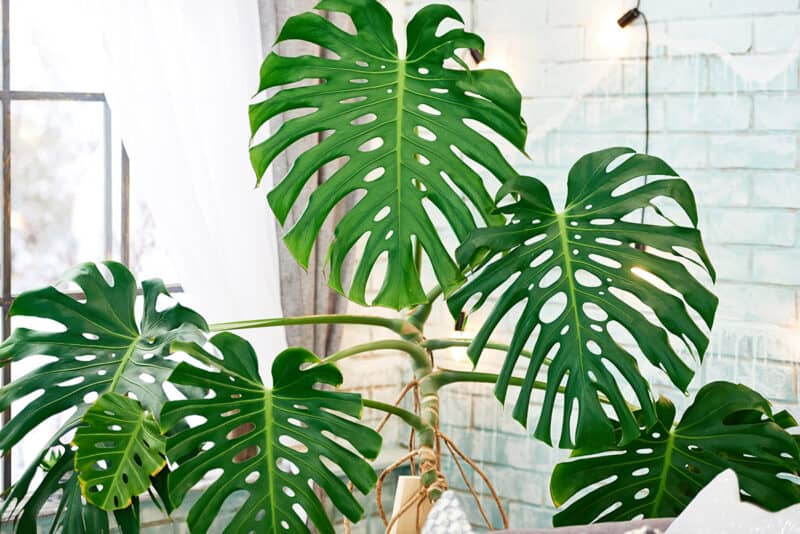
Once you have chosen which monstera plant is right for you, next you need to think about planting.
First, you need to buy a pot with drainage holes at the bottom. Every variety of monstera will need this type of pot because they can’t handle wet roots. Pick the correct size for the species you go for. Choose something that is a few inches larger than the pot it is currently growing in.
To fill the pot, you will need houseplant-specific potting soil. Finding the right soil for a monstera plant is crucial to extending its life span.
Why does soil matter?
Well, you want to make sure your plant is anchored properly. Other things that depend on the right soil are:
- Gas exchange
- Sufficient water
- Temperature regulation
- Nutrients
If the soil is not right, your plant won’t be able to access what it needs to thrive.
Look for potting soil that has water retention and drainage. These soils usually contain some mix of peat, vermiculite, perlite, compost, rice hulls, clay, or sand.
You’ll need to replace the soil every year or two because it begins to compact and lose nutrients. If you don’t, you’ll notice that your monstera stops growing as well as it used to.
Once you have the soil situation covered, you might need to provide something for your monstera to climb, such as a moss-covered stick or a trellis.
After planting your new monstera, you will have to pick the perfect spot for your new friend. The trick for making sure that your monsteras are happy is to be sure you’re growing them with the right balance between light and shade. If there is too much light the leaves will die, and with too much shade the leaves will not grow properly.
The best place is close to a window where it will receive lots of bright, indirect light.
How to Care for Your Monstera Plants
Once you get your Swiss cheese plant comfy in its new home, you’ll need to work (not too hard) to keep it happy. The most important things to remember when it comes to monstera are, not too much sunlight or the leaves may die. Don’t overwater the soil, but make sure it is constantly moist.
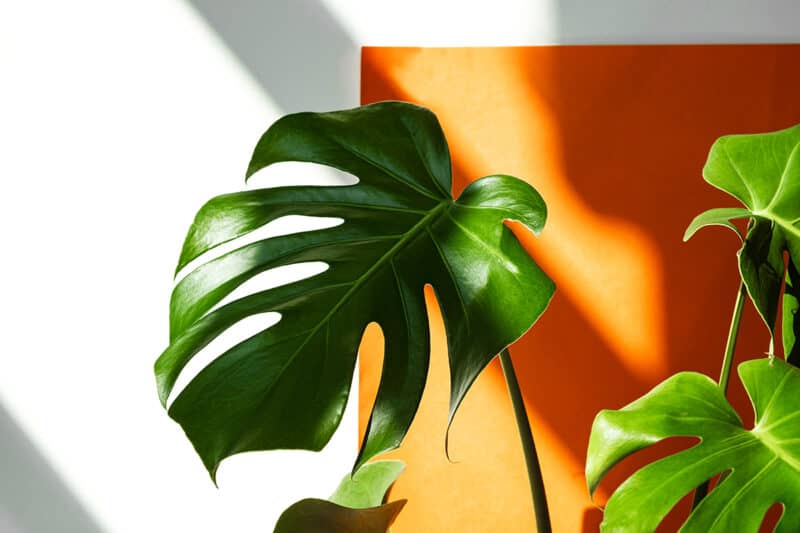
Watering
The key to watering monstera correctly is ensuring the plant is always in moist soil. To check if the soil is moist enough, use your finger. If the top inch feels dry, add water.
If the plant doesn’t get enough water, the leaves will start to droop and it will be susceptible to pests or diseases, so be diligent about watering.
Temperature
Monstera is particularly good as a house plant because it thrives in the same temperatures that humans prefer. The main thing is that the plant doesn’t get too much cold air directly on it. That means keeping it away from windows in the winter or an AC register in the summer. Extremely cold temperatures will kill this plant.
Keep it far away from heat like that from a radiator or heat register, as well.
Fertilizing
Generally, monstera plants don’t require too much fertilizer to keep them growing happily. In fact, they only need fertilizer once per month during spring and summer. During the dormancy period in fall and winter, the plant doesn’t need any fertilizer.
Propagation
Propagating these plants is simple. To start, cut off a leaf at the base. Place the leaf into a glass of water and put the glass in bright, indirect light. Change the water every week.
Once the plant starts developing roots, which typically takes a few weeks, you can plant it in soil and it should develop into another huge plant.
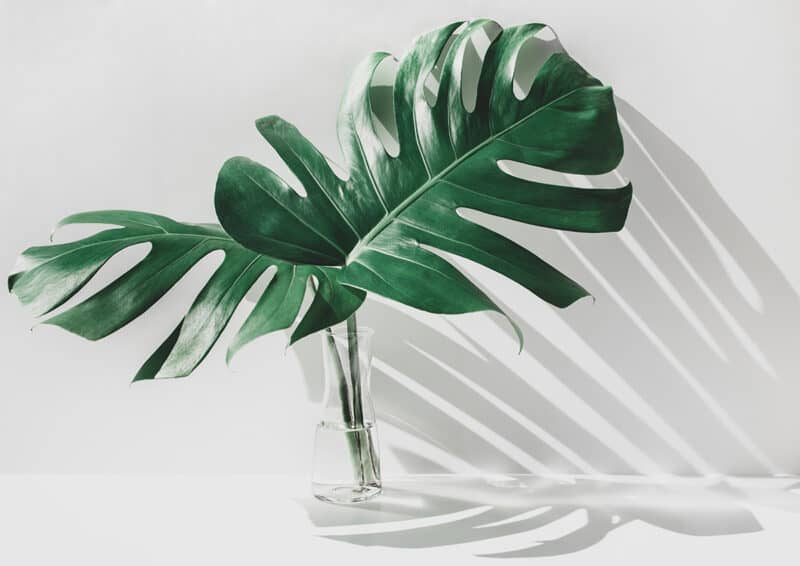
Common Problems to Growing Monstera
Monsteras are pretty darn hardy, but you may come across problems while growing them. Here are the big issues to keep an eye out for:
Brown or Yellow Leaves
There are two possible reasons why the leaves on your monstera are turning brown:
Inconsistent Soil Moisture – When you don’t check on your soil frequently and it becomes too dry, then the leaves will start turning brown. The best way to avoid this is to double-check you have saturated all of the soil when watering and that you’re watering often enough.
Fungus – If the brown spots on your plant leaves have a yellow outline, then there might be a fungus problem. This problem can occur when there is too much water and too little air circulation. Ideally, you can catch the fungus problem early and cut off the infected leaf. That way, your Monstera can recover and heal with time.
If not, try a copper-based fungicide.
Pests
Most of the common houseplant pests will attack monstera, including aphids, fungus gnats, whiteflies, and scale.
Best Companion Plants for Monstera
Overall, monstera is a gorgeous houseplant that requires little maintenance and adds a lovely green touch to your home.
Pothos
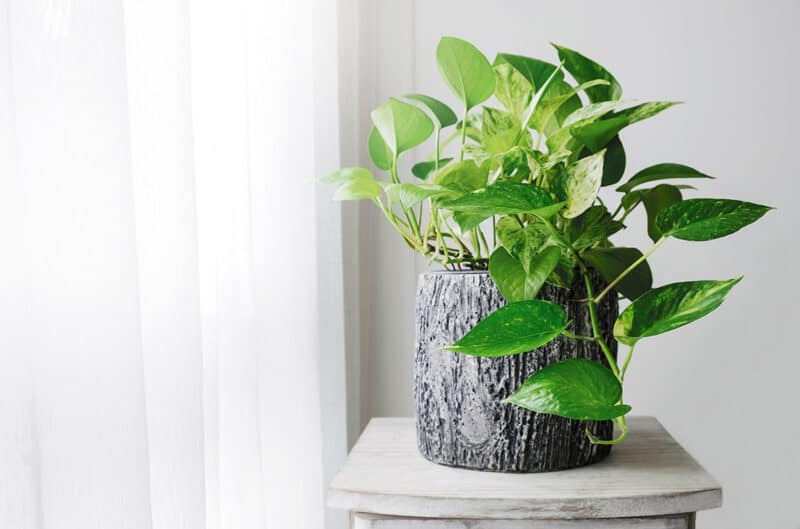
Just like monstera, pothos plants grow in indirect sunlight and can be kept indoors. It can be a great companion for Monstera.
Philodendron
The philodendron plant is an easy plant to care for in your house and it looks fantastic next to your monstera. It needs minimum sunlight to grow.
As much as plants like company indoors, you should avoid certain plant combinations.
Jade
It’s not a good idea to combine jade and monstera due to the different caring requirements and light management.
